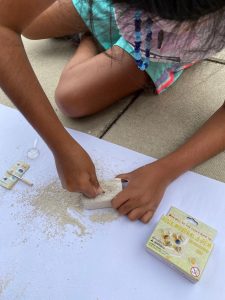 Deep in the heart of Ancient Greece, a group of Green Cluster students donned their archaeologist hats in order to perform an important excavation of precious gems… Or at least that’s what they imagined!
Deep in the heart of Ancient Greece, a group of Green Cluster students donned their archaeologist hats in order to perform an important excavation of precious gems… Or at least that’s what they imagined!
Head Teacher Nicole Goldman, Assistant Teacher Ted Boesky, and Technology Teacher Joel Levin’s class began their study of Ancient Greece last week, which incorporated fun activities such as the excavation mentioned above.
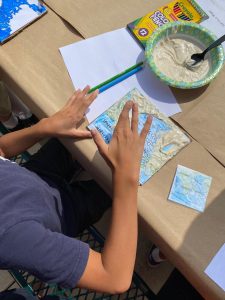 To begin the unit, students first learned geographic terms, like peninsula, strait, and isthmus. The students then looked closely at Ancient Greece’s geography by labeling a map and taking notes on important landforms and bodies of water.
To begin the unit, students first learned geographic terms, like peninsula, strait, and isthmus. The students then looked closely at Ancient Greece’s geography by labeling a map and taking notes on important landforms and bodies of water.
“The students were able to create 3D maps of Ancient Greece by mixing together salt, flour, and water to create the topography,” Ms. Goldman said. “They enjoyed this creative art project and were really able to visualize the placement of these essential landforms and bodies of water.”
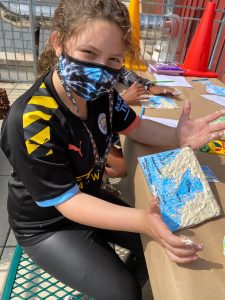 After that, students learned about timelines by practicing reading, interpreting, and plotting events on a timeline. They then discussed the difference between Before Common Era (B.C.E.) and Common Era (C.E.), analyzing why our history is split into two different sections of time.
After that, students learned about timelines by practicing reading, interpreting, and plotting events on a timeline. They then discussed the difference between Before Common Era (B.C.E.) and Common Era (C.E.), analyzing why our history is split into two different sections of time.
The class then moved on to studying archeology, exploring a day in the life of an archaeologist.
Ms. Goldman said, “The students put on their archaeologist hats in order to excavate gems out of clay tablets. They enjoyed this activity since it allowed them to take on the perspective of an archaeologist at a digging site.”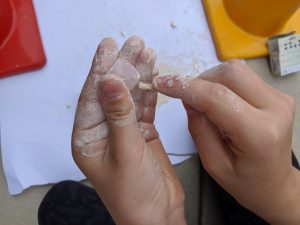
The class also learned about the first Greek civilizations, which have a major influence on our culture today.
To demonstrate the start of the Dark Ages, a time in Ancient Greek history with no written language or art, the teachers had students independently color Greek frescoes, a mural painting technique. After 8 minutes of coloring, the teachers dramatically removed the paintings from each group while announcing that they were finished. 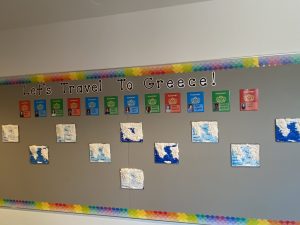
They then explained that when archaeologists excavated buildings and artifacts from this time period, it was these half-completed creations that were found.
“The students exchanged confused expressions and comments when they were trying to figure out what we were doing!” Ms. Goldman said. “It was great to see our students make connections with the reading on the Dark Ages and our simulation.”
